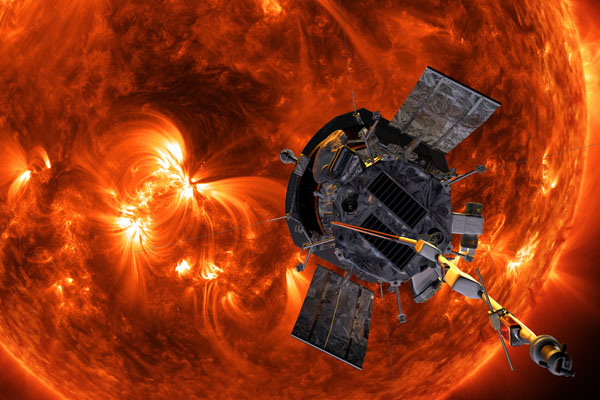NSO: NSF’s GONG Facilities Helped Parker Solar Probe In Finding Source of Solar Winds

A paper published today in the Nature journal reports that NASA’s Parker Solar Probe has flown close enough to the Sun to detect fine structure of the solar wind to be able to suggest the regions of their origin. These winds carry charged particles to Earth that create beautiful auroras and disruptive solar storms that impact our satellites and electrical grids. Understanding the source of solar winds provides clues to better predict solar storms.
The paper is credited to a team of scientists led by Stuart D. Bale, University of California, Berkeley, and James Drake, University of Maryland-College Park. The National Science Foundation’s GONG facilities, managed by AURA and operated by the National Solar Observatory (NSO), were fundamental in supporting PSP’s mission.
GONG-produced magnetograms (maps of magnetic fields on the Sun) were instrumental as input into modeling systems used to trace magnetic connectivity between the Sun and spacecraft (PSP). The model outcome traces the magnetic connectivity, which then helps identify where on the Sun the solar wind originated. GONG data is also used regularly in modeling prediction of magnetic activity before PSP’s passage or encounter with the Sun’s outer atmosphere.
“For more than a quarter of a century, GONG has provided observations in support of scientific research and operational space weather forecasting,” said Alexei Pevtsov, NSO/NISP Associate Director, “We are glad that GONG magnetograms were used to make this discovery.”
NSF facilities including GONG, SOLIS, and the Daniel K. Inouye Solar Telescope play integral roles in the new era of multi-messenger solar physics – the coordinated solar observations between ground-based and space-based solar observatories.
